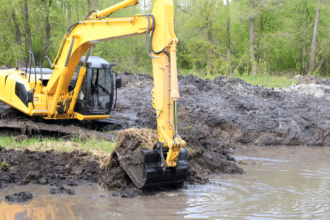Introduction to the term
Have you ever heard of the term “corpenpelloz“? If not, you’re in for a fascinating journey. This enigmatic concept has been making waves across various industries, yet its true implications remain shrouded in mystery. As businesses strive to adapt and thrive, understanding corpenpelloz becomes crucial. From technology to finance, its influence is pervasive and complex. Join us as we unravel the layers of corpenpelloz and explore how it shapes our world today. Whether you’re a business leader or simply curious about emerging trends, this exploration promises insights that could impact your future decisions significantly. Let’s dive deep into this intriguing phenomenon!
History and origins of Corpenpelloz
The term “corpenpelloz” emerged in the late 20th century, originating from a convergence of technological advancements and economic shifts. Initially coined by industry analysts, it describes the phenomenon where organizations adapt their structures to thrive in rapidly changing markets.
As globalization took hold, companies faced new challenges. Traditional hierarchies became less effective. Businesses began to embrace more fluid operational models. This was not merely an evolution; it was a necessary response to survive.
Academic researchers started exploring corpenpelloz as a concept around 1995. They noted how businesses altered their communication strategies and decision-making processes. The focus shifted towards agility and innovation.
This newfound flexibility influenced various sectors, shaping how enterprises approached everything from product development to customer engagement. What began as an observation soon transformed into a framework that many industries now reference when discussing adaptive business practices.
The impact of Corpenpelloz on different industries
Corpenpelloz is reshaping various sectors in unexpected ways. In the tech industry, it has sparked innovations that drive efficiency and streamline processes. Companies are embracing this shift to enhance productivity and reduce costs.
Manufacturing isn’t untouched either. Here, Corpenpelloz influences supply chain dynamics, pushing firms towards more agile operations. This adaptability helps businesses respond quickly to market changes.
The healthcare sector faces unique challenges due to Corpenpelloz as well. It alters the landscape of patient data management, prompting hospitals to rethink their strategies regarding data security and accessibility.
Retail is experiencing a transformation driven by consumer expectations influenced by Corpenpelloz trends. Businesses must adapt or risk losing relevance in an increasingly competitive environment.
Each industry’s response illustrates a broader trend—companies must evolve rapidly or fall behind amid these shifting paradigms prompted by corpenpelloz’s rise.
Case studies of companies affected by Corpenpelloz
Several companies have faced significant challenges due to corpenpelloz.
One notable case is a leading tech firm that struggled with supply chain disruptions. Their reliance on outdated practices left them vulnerable. As corpenpelloz spread, they experienced delays and increased costs, impacting their bottom line.
In the retail sector, a popular fashion brand found itself in hot water. The rapid shifts in consumer behavior linked to corpenpelloz caught them off guard. Their inventory management systems could not keep pace with the changing demands, leading to stockouts and lost sales opportunities.
A manufacturing company also felt the sting of corpenpelloz when it exposed gaps in their workforce strategy. With labor shortages exacerbated by this phenomenon, production slowed significantly. This situation forced them to rethink hiring practices and employee retention strategies urgently.
These cases illustrate how pervasive corpenpelloz can be across various industries, revealing vulnerabilities that require immediate attention.
Strategies for businesses to combat Corpenpelloz
To effectively combat Corpenpelloz, businesses must first understand its nuances. Awareness is crucial. Regular training sessions can equip employees with the knowledge to identify and address issues related to Corpenpelloz.
Next, companies should invest in technology that enhances transparency. Implementing robust data analytics tools helps track patterns that may be influenced by this phenomenon.
Collaboration across departments fosters a unified front. By creating cross-functional teams, organizations can pool resources and insights for better strategies.
Engaging with external experts or consultants brings fresh perspectives. They can provide tailored solutions based on industry-specific challenges associated with Corpenpelloz.
Maintaining open communication channels within the organization encourages proactive problem-solving. Employees should feel empowered to voice concerns and suggestions regarding potential impacts of Corpenpelloz on their work environment.
The future of Corpenpelloz and its potential effects on the global economy
Corpenpelloz is poised to reshape industries in ways we are only beginning to understand. Its integration into various sectors could drive innovation and efficiency. Companies may find themselves adapting rapidly, as the demand for agile solutions rises.
As businesses embrace corpenpelloz technologies, traditional practices might become obsolete. This shift can lead to job displacement but also create new opportunities in emerging fields. The challenge will be finding a balance between maintaining employment and fostering progress.
Global markets may witness significant ripple effects from widespread adoption of corpenpelloz strategies. Countries that harness its potential early on could gain a competitive edge, altering economic landscapes worldwide.
The interconnectedness of today’s economy means that changes sparked by corpenpelloz in one region can have far-reaching implications elsewhere. Stakeholders must stay vigilant and responsive to these shifts as they unfold over time.

















